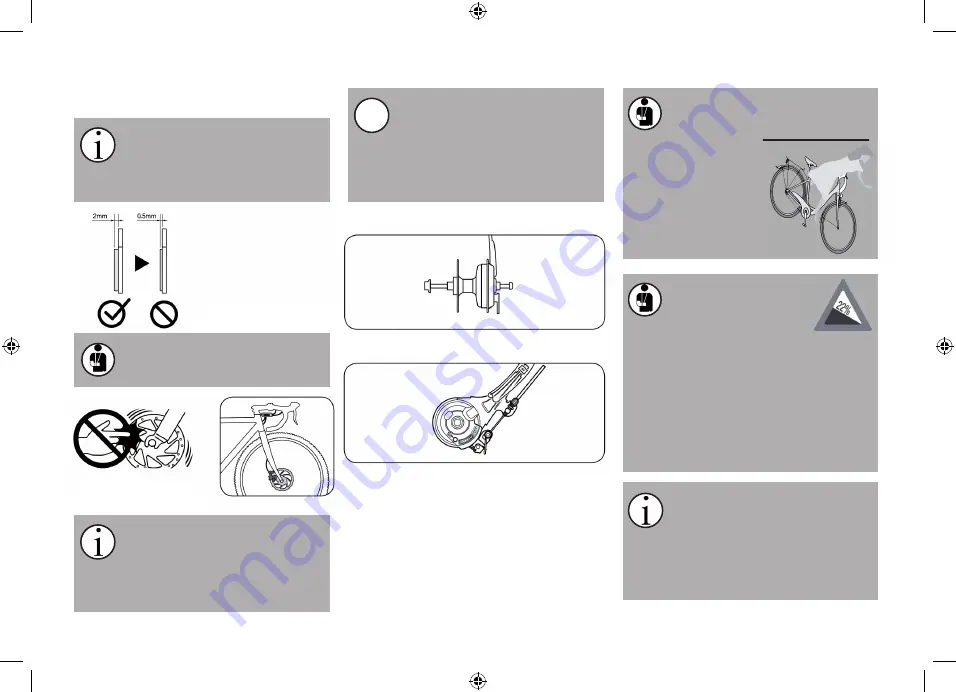
31
Read the instruction of the component manufac-
turer when the brake system requires cleaning.
Brake disk , in particular, are subject
to wear. Please allow a specialist
dealer to check these safety-related
parts on a regular basis and to replace them
as required.
Do not touch the brake disk while it
spins or directly after braking. There
is a risk of injuries or burns.
If your bicycle comes equipped with
a converter, which makes it possible
to operate hydraulic brakes with me-
chanical brake levers, read the attached com-
ponent manufacturer’s operating instructions
before using it.
Various versions of disk brakes are
available for racing and cyclo-cross
bikes. Please always read the en-
closed instructions from the component man-
ufacturer before the fi rst ride. Familiarise your-
self with the operation and behaviour of the
brakes on a safe piece of land before riding.
Drum brakes
Roller brakes
Gear hubs, roller, drum or back pedal brakes are
opened as follows:
• Loosen the cable anchor or quick release on
the brake arm.
• In the case of back pedal brakes, the screws
on the brake arm of the chain stay have to be
opened.
Nearly all modern brakes have much
more braking power than was avail-
able for bicycles in former times. Be
careful while getting
used to it. Practise the
use of the brakes and
emergency braking ac-
tions in traffi c-free, safe
terrain fi rst before partici-
pating in road traffi c.
Do not brake continuous-
ly or only with one brake
when you ride on a long
or very steep incline. This might
lead to overheating and associated loss of
braking force.
You brake correctly and safely when you
use both brakes equally. The only exception
is riding on slippery ground, e.g. on sand or
ice. This should be done cautiously and main-
ly with the rear brake. There is otherwise a
risk that the front wheel slides sideways and
causes a fall.
Your bicycle is supplied with the
corresponding operating manual for
your specifi c gear system. You can
get more information about the gears on your
bicycle in the operating manual provided by
your manufacturer or on the manufacturer’s
website.
!
Source: Shimano
®
techdocs
Roller brake
Source: Shimano
®
techdocs
Source: Shimano
®
techdocs
IDEAL MANUAL 2016_eng.indd 31
6/27/16 11:39
s
















































